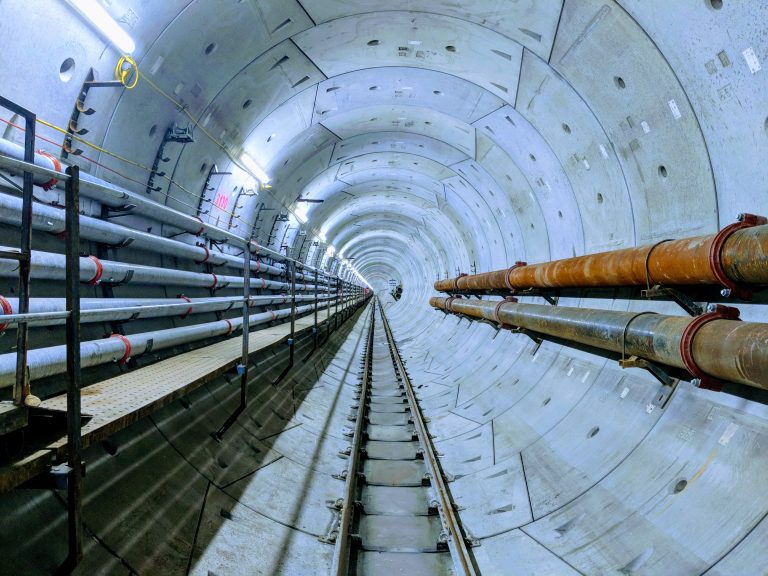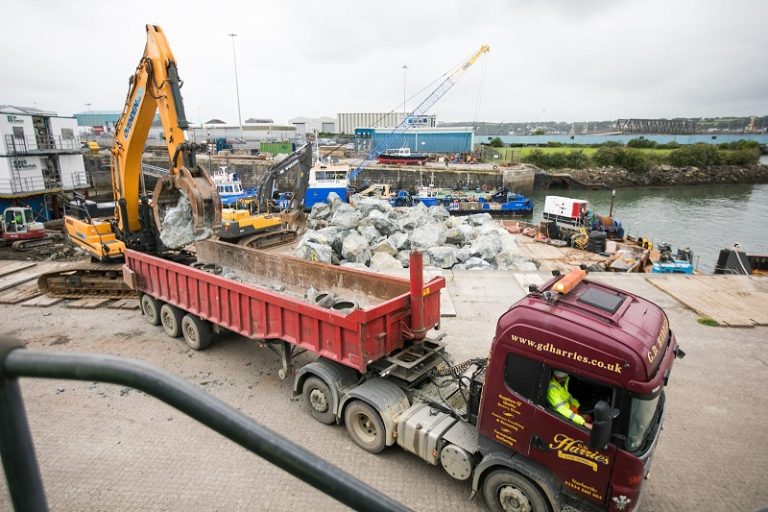Gaskets contributed to an “exceptionally well-built” tunnel – Costain First use of new gasket designed to reduce risk of segment cracking Only gasket that met tunnel design specification No reported segment cracking arising from high corner contact pressure The construction phase of Scotland’s biggest waste water tunnel has been completed with the benefit of an innovative tunnel segment sealing gasket developed by VIP-Polymers Ltd. The 3.1-mile-long Shieldhall Tunnel beneath Glasgow has been one of the first projects to make use of the rubber gaskets manufactured by VIP, which are designed to reduce the risk of segment cracking during installation. The tunnel boring machine broke through in October 2017 after spending 15 months creating the 4.7m-diameter tunnel for Scottish Water. Its journey from Craigton to Queen’s Park, across the south of Glasgow, has created the largest-diameter bored tunnel in Scotland. Global seals and gaskets manufacturer VIP, based in Huntingdon, Cambridgeshire, was commissioned to provide all the tunnel segment gaskets (TSGs) by construction joint venture Costain VINCI Construction Grands Projects. The cast-in TSGs used incorporated VIP’s new patented compliant compressible corner technology, which ensures delivery of consistent load performance along the entire perimeter of the gasket. This eliminates the risk of a build-up of pressure at one or more of the gasket’s corners during installation, which could contribute to segment cracking. Matthew Levitt, VIP Technical Business Development Manager, said: “Our new cast-in TSGs have performed very well throughout the Shieldhall Tunnel construction process, demonstrating exceptional levels of reliability. “Segment cracking is a concern for all partners in tunnel construction projects as it can result in delays and additional cost. Clients have welcomed the opportunity to make use of a new technology designed specifically to minimise these risks.” Sam Simons, Tunnel Lining Supply Manager for Costain, said: “The decision to manufacture segments with VIP gaskets for Shieldhall was taken late in the approval process when it became clear that only VIP gaskets could meet the specified requirement for compressible corners to prevent hard spots. “The steel fibre reinforced concrete segment manufacturing process was achieved within the tightest of specifications, and all manufactured rejections were less than 0.25%, including exact gasket positioning. “Overall, the VIP gaskets contributed to an exceptionally well-built tunnel, with no reported segment cracking arising from high corner contact pressure, or segment ram loading transfer, cracks or leakage, meeting the tunnel lining specification without compromise.” Conventional shot-joining of TSGs can result in the compression cavities within the extruded profile filling with rubber. This greatly limits compression, increasing the risk of corner point loading, and cracking. VIP’s new corner joint, which has a UK patent, with international patents pending, maintains the TSG compression cavity profile right to the corner edge. Extensive testing has shown this eliminates the risk of a build-up of pressure at one or more of the gasket’s corners during installation, which could contribute to segment cracking. Prior to manufacturing any gaskets, members of the Costain waterproofing team witnessed corner loading (T and Cruciform) and pressure testing of the gaskets in VIP’s testing facilities in Huntingdon. Over the last 18 months, VIP has manufactured more than 19,500 individual TSGs for the project. These have been cast into each tunnel segment at FP McCann’s site in Drakelow, Derbyshire, England. Dave Derbyshire, Operations Manager for Underground Products at FP McCann, said: “For this contract we used cast-in gaskets supplied by VIP for the first time. “The geometry of the segments meant that the gaskets required intricately formed corners to fit the steel moulds correctly and provide a draft angle to the sealing face of the key and adjacent segments along the Z axis. “Technical representatives from VIP visited our facility at Drakelow prior to segment production, to ensure the correct fit was achieved on all six segment types. Once they, and ourselves, were satisfied with the gasket fit, they went into production. “During the segment manufacturing programme VIP delivered gaskets on time, and to a consistent quality. Their technical back-up team was always on hand, but rarely needed.” The £100-million Shieldhall Tunnel is one of the most important wastewater infrastructure projects in Glasgow since Victorian times. It will help tackle flooding and improve river water quality across the city. The 1,000-tonne tunnel boring machine, longer than 14 buses and named Daisy the Driller by a Glasgow schoolboy, began the process of creating the tunnel in July 2016, and completed it on 13 October 2017, when it emerged at the bottom of a 16-metre-deep shaft. The giant sewer will provide 90,000 cubic metres of extra storm water storage, equivalent to 66 Olympic swimming pools.














